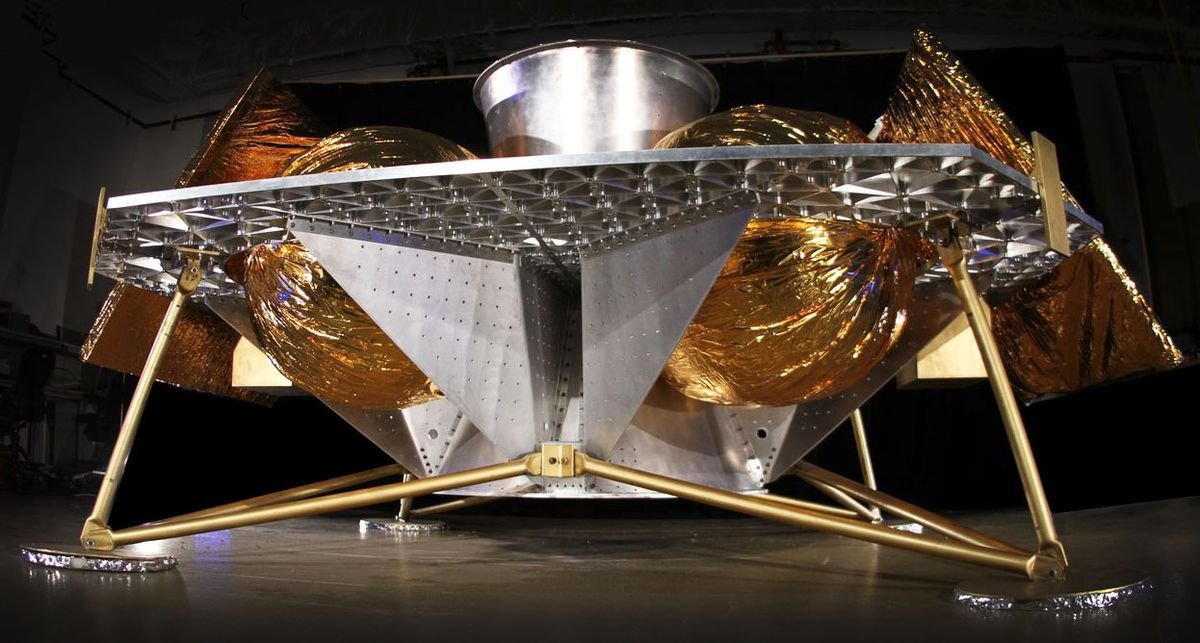Astrobotic’s Peregrine moon lander was a promising step in private space exploration. However, just seven months ago, this ambitious mission ended in disaster as the Peregrine lander disintegrated over the Pacific Ocean.
What was meant to be a landmark achievement for NASA’s Commercial Lunar Payload Services (CLPS) program instead turned into a tense, week-long drama that culminated in the loss of the spacecraft.
The High Stakes Behind Peregrine Moon Lander’s Mission
Peregrine Moon Lander wasn’t just any moon lander—it was a key player in NASA’s commercial lunar payload program. The lander was supposed to fly aboard the Vulcan Centaur rocket on its maiden voyage and deliver critical experiments, artwork, and even Bitcoin to the lunar surface. The mission’s failure was a significant blow, given its importance in paving the way for future commercial lunar endeavors.
What Went Wrong: The Technical Breakdown
Following the crash, Astrobotic Technology, the company behind Peregrine Moon Lander, launched an extensive investigation into the mishap. They enlisted 34 experts from government, industry, and in-house teams to determine the cause. After months of rigorous analysis, the culprit was identified: a faulty pressure control valve (PCV2).

The issue with PCV2 was a “loss of seal capability,” which occurred due to a mechanical failure caused by vibrations during Peregrine’s journey. Essentially, the vibrations caused a loosening of threaded components within the valve, leading to an improper seal. As a result, PCV2 was unable to regulate the flow of helium between the lander’s pressurant and oxidizer tanks, a critical function for the mission’s success.
The Domino Effect of a Faulty Valve
The failure of PCV2 had severe consequences. As the valve lost its sealing capability, helium began leaking uncontrollably. This caused the pressure in the oxidizer tanks to rise beyond safe levels, eventually leading to a rupture. The malfunction didn’t just end there—it triggered a cascade of events that ultimately caused the spacecraft to fail. Attempts to correct Peregrine Moon Lander’s trajectory proved futile as the damaged system struggled to function.
A Known Risk That Went Unchecked
Interestingly, PCV2 wasn’t an unknown risk. Astrobotic had previously encountered issues with similar components and had even switched suppliers during the lander’s construction. Despite these precautionary measures, the new PCV1 also developed leaks during testing.

However, due to its accessible location, PCV1 was quickly repaired. PCV2, located deep within the spacecraft, wasn’t rechecked, partly because it didn’t show any signs of failure during initial tests and partly due to the difficulty and expense of accessing it.
Lessons Learned: Looking Toward the Future
While Peregrine Moon Lander’s mission ended in failure, it provided invaluable lessons for future space exploration. The extensive investigation into PCV2’s failure allowed the team to develop a detailed play-by-play account of the events leading up to the crash. These insights are already being applied to improve the design and reliability of Astrobotic’s next lunar lander, Griffin, scheduled to launch by the end of 2025.
The Griffin lander will incorporate several design improvements, including a more robust propulsion system and backup mechanisms to prevent a repeat of the PCV2 failure. The lessons learned from Peregrine Moon Lander will ensure that future missions stand a better chance of success.
The Road Ahead: A Resilient Path Forward
Despite the setback, Astrobotic remains committed to its lunar ambitions. The upcoming Griffin mission is a testament to their resilience and dedication to advancing commercial lunar exploration. Griffin will land at the moon’s south pole, equipped with enhanced technology and a more reliable helium control system.

Although Peregrine Moon Lander’s failure was a significant disappointment, it underscored the unpredictable nature of space exploration. As Astrobotic and the broader space community continue to push the boundaries of what’s possible, every setback offers a chance to learn and improve.
In the end, Peregrine’s mission may have failed, but its legacy will help shape the future of lunar exploration. The lessons learned from this experience will guide the design and execution of future missions, ensuring that the dream of commercial lunar exploration becomes a reality.








